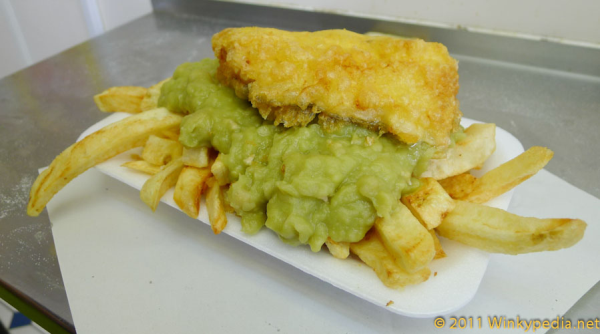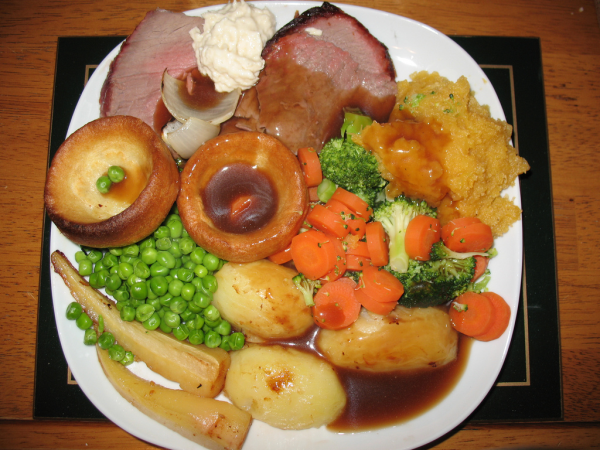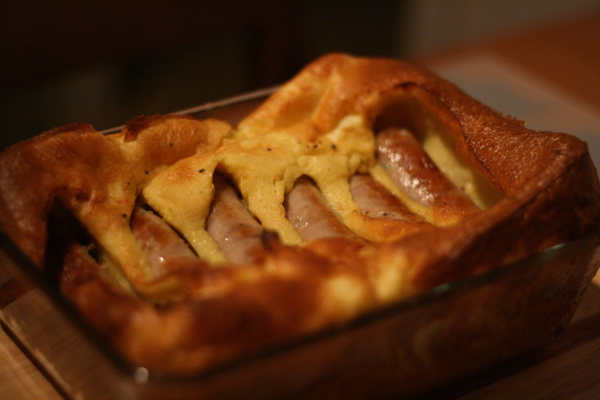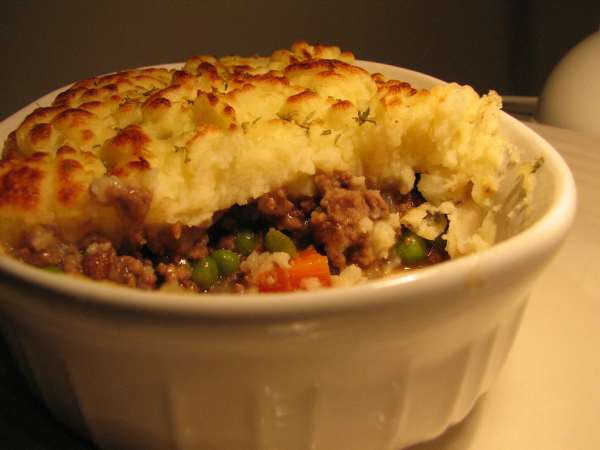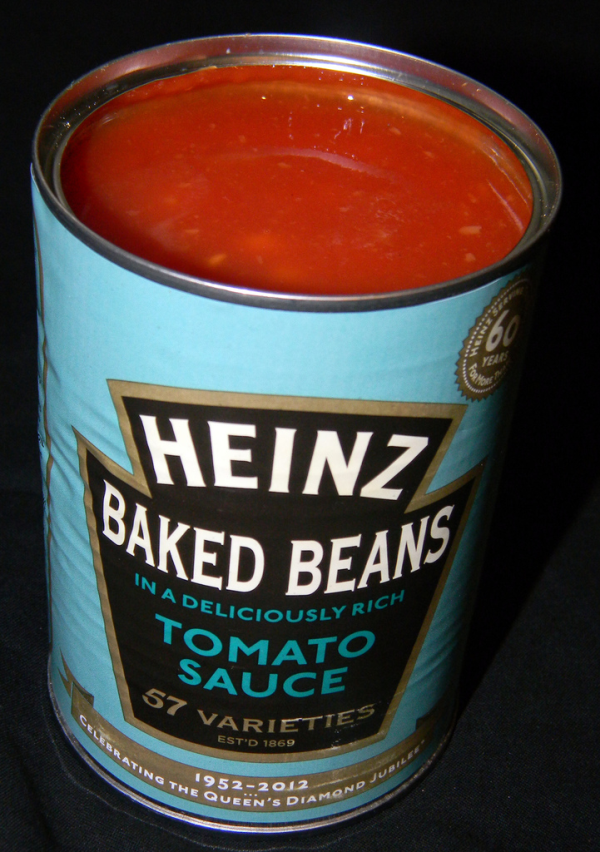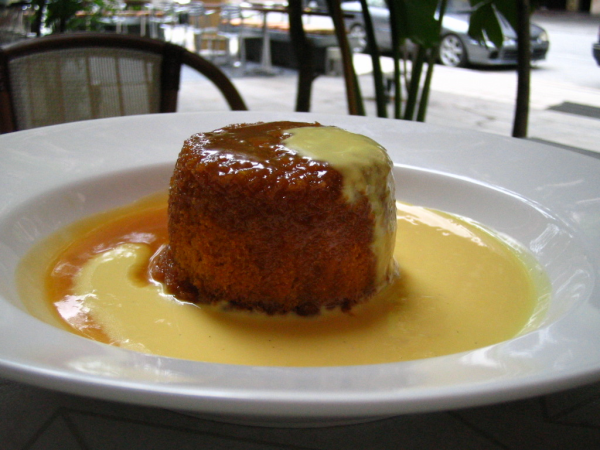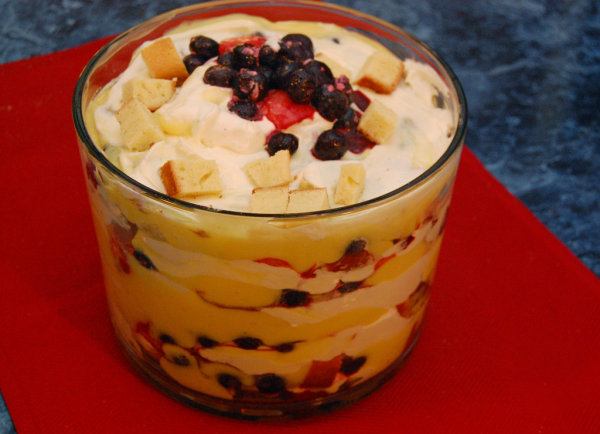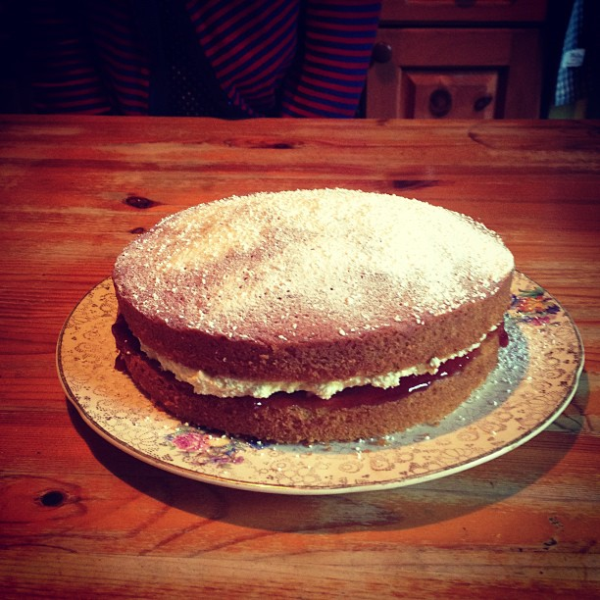8 Classic Cuisines to Try in Great Britain

When educational travel groups arrive in London, I find that there is a common misconception about British food; that it’s not very good. Over the last couple of decades, the UK has become a nation obsessed by food. The television channels are flooded with all manner of food programmes from celebrity chefs showing us how to cook up a feast, to national cooking competitions, to reality TV dinner-party shows. In all this foodie excitement, classic British dishes have had something of a renaissance.
Despite this, first time visitors to Britain are often caught out by not knowing which traditional food to try when, how or where. Here is a bit of background on some of the best known classic British dishes, which I hope will guide you to making top foodie choices during your stay in the UK.
Fish and Chips
This all-time national favourite is traditionally eaten as take-out (known in the UK as take away). The British ‘chippy’ or ‘chip shop,’ as a place selling fish and chips is colloquially referred to, is the best, if not the only place where you should sample this delicacy. I’m highly skeptical of the pub or restaurant versions, and for a true fish and chip experience, it should come served in polystyrene, wrapped in newspaper, and eaten with a wooden fork or fingers.
The first recorded fish and chip shop opened in London in 1860 by a Joseph Malin, but Charles Dickens was already writing about ‘fried fish warehouses’ in Oliver Twist in the 1830s. The most popular day for eating fish and chips is a Friday; this custom originates from the Catholic tradition of abstaining from meat on this day.
The most popular fish used is cod, but given recent concerns for sustainable fishing, this is often now replaced with other white fish such as haddock, whiting or pollock. A fish and chip connoisseur might tell you that the most important element of a fish and chip meal is the batter; it should be light and not too flavoursome that it takes away from the fish. The chips differ from the American French fries by their chunkiness; they should be as thick as your finger. Mushy peas (foul looking but delicious green mush of processed peas), or tartar sauce, are the only accompaniments to add; ketchup is an absolute no. Instead, the perfect sauces to add are a good sprinkle of salt and lashings of malt vinegar.
The perfect beverage to compliment this delicious affair is a cup of tea; a strong brew served with milk, what might often be described as a ‘builders’ tea. Little bit of trivia for you here, during the Second World War, fish and chips were the only food not to be rationed!
Sunday Roast
The roast meal, be it lunch or dinner is such an integrated part of British culture that the French commonly and colloquially refer to their quirky neighbours as, ‘les Rostbifs’ (we, in turn, refer to them as ‘the Frogs,’ for their penchant for frogs legs).
Indeed, roast beef is the favourite meat to go with this classic meal, but it can happily be replaced by roast chicken, lamb, pork, or the veggie option, nut roast. The traditional day for a roast is a Sunday, and unlike fish and chips, a pub or restaurant is usually a great way to try a roast, and they will normally only serve it on a Sunday. The Sunday Roast is similar to the traditional Christmas dinner, but without so many of the trimmings.
There are several theories for the origins of this Sunday tradition, but perhaps the most plausible, is that sometime in the late 18th century, around the time of the Industrial Revolution, families in Yorkshire, in the north of England, would leave a cut of meat to cook in the oven so that it would be ready for them by the time they arrived back from church. If this is the origin, these northerners added a key addition to the Sunday Roast: Yorkshire pudding. Despite its name, this does not add a sweet element to the dish; a Yorkshire Pudding is made out of savoury batter. Other trimmings are roast potatoes and a selection of vegetables, all served up with a good dose of the obligatory gravy.
When made at home, the leftovers are often mixed together, shallow fried, and become another traditional dish: Bubble and Squeak. The first recipe found is by a Maria Rundell, and dates from 1806. It became particularly popular during the Second World War when there was strict food rationing and nothing could be wasted. The fabulous name was given for all the squeaky sounds it makes when cooked.
Bangers
In the UK, bangers have nothing to do with hairstyles. Instead, ‘bangers’ is slang for sausages. The name was given to any type of sausage in the early 20thcentury when some, particularly those made in the time of the Second World War under food rationing, had water added to them. This made them highly likely to explode and make a bang if cooked on a high heat.
Two of the most British of dishes make excellent use of the humble banger. ‘Bangers and Mash,’ might be considered one of the most worthy meals to go under the heading, ‘comfort food.’ Found on most pub menus, whether a modest local or a posh gastro pub, sausages served with creamy mashed potato and with the obligatory onion gravy, are a faithful favourite.
The second traditional sausage dish has the rather wonderful name of ‘Toad in the Hole.’ A combination of the Yorkshire Pudding batter baked with bangers in a casserole dish, this would be served with vegetables and once again, the obligatory onion gravy. Quite why it was given the name is a bit of a mystery, some have suggested that the dish looks like a toad poking it’s head out of a hole, but I struggle to see this myself. In any case, some version of today’s perfected recipe has been about since the 16th century making it a well-deserved classic.
Cottage Pie and Shepherds Pie
Ask a Brit the difference between a Cottage or Shepherd’s Pie, and they may struggle to give you an answer. Essentially, both dishes consist of minced meat cooked with vegetables and gravy, topped with crusty mashed potato. Originally, this was a dish that would once again, make use of the leftover Sunday roast meat.
The first recorded mention of a Cottage Pie dates back to 1791. Before then, most pies would have been made with pastry since potatoes hadn’t yet arrived from the Americas. It was only in the late 18th century that the humble spud was introduced to Britain as an affordable crop that would feed the poor. Almost a century after the appearance of Cottage Pie, came a very similar version, this time called Shepherds Pie. The difference here is that the meat used is mutton since a Shepherd looks after his sheep.
Baked Beans
Despite a version of baked beans existing in many other countries around the world, given the fact that almost 2.3 million Brits eat baked beans every day, it’s fair to say that this is most definitely an integral part of the British diet.
Rather than baked, the British version is a stew of white beans in a sweet tomato sauce. Heinz first sold tins of this now classic in 1886, in the upscale London department store, Fortnum and Mason. Today, almost every supermarket produces its own version and it’s considered one of the best budget foods. In spite of this, and to keep with tradition, Fortnum and Mason still stock humble baked beans alongside their truffles and caviar. Considered by many as an essential component of the traditional English Breakfast, they are very often eaten as a supper on toast, or as a side to chips, baked potatoes or almost anything you can think of.
And now for something sweet…
Pudding
To a Brit, the word ‘pudding’ might be used interchangeably with ‘dessert’ to describe the sweet course eaten at the end of a meal. The word ‘pudding’ dates all the way back to Roman times when the word ‘botellus,’ meant small sausage, which then became ‘boudin’ in French and referred to encased meats; think ‘black pudding’.
In Medieval times, the Brits used sausage skin or an animal’s stomach lining to cook a mixture of suet, breadcrumbs and meat (once again adding bulk to make the meat go a little further). It was only in the 18th century that a sweet sponge mixture most commonly replaced the suet and instead of meat, the mixture would use nuts, dried fruits, jams and syrups. The mixture would be cooked in a greased basin, covered with a cloth or paper that was half immersed in water and steam cooked for several hours.
Today, there are a thousand variations on the simple and classic steamed pudding; ginger sponge with syrup sauce, chocolate sponge with chocolate sauce, plain sponge with jam sauce. They are usually served with lashings of hot, creamy custard sauce, and are very popular as a treat during those long British winters. Some variations of the sponge pudding are considered such a harmonious marriage of flavours, that they have been given their own name and are considered classic deserts in their own right.
Plum Pudding or Christmas Pudding is an example; the richest pudding of them all doesn’t actually use any plums, but in pre-Victorian times, raisins were known as plums and this pud’ uses heaps of dried fruit soaked in alcohol. Because of the alcohol content, the pudding is naturally preserved and can be stored for up to a year. The richest steam pudding of them all, it is traditionally set alight with another dash of alcohol when ceremoniously brought to the Christmas table, and then served with an alcohol infused cream called ‘brandy butter.’
Spotted Dick is another famous steamed pudding and the name still makes schoolgirls giggle. The dough used is suet based that is laced with currants or raisins giving it a spotted effect. It’s believed that the origin of ‘dick’ is a corruption of the word ‘dough.’ In 2009, the BBC reported that in Wales a council canteen had changed the pudding’s name to ‘Spotted Richard’ to avoid the endless jokes made by their customers! The first documented reference to this pud’ dates back to 1849 when it appeared in a recipe book, ‘The Modern Housewife.’
Trifle
This quintessential British dessert is such a classic that a version of it has existed since 1596.
Since then it’s undergone many changes and variations, so much so that in 2009, a recipe book dedicated to this one desert was published with over 100 variations on the original. Served in a glass dish to show off its layers of beauty, let me talk you through them. At the bottom, you will find some kind of alcohol-dipped sponge or light biscuit layer, this is followed by fruit, most commonly strawberries that have been solidified with a jelly covering (jelly here is not jam that Americans eat with peanut butter but a gelatin type jelly). This is then followed by a layer of cold, solidified custard, and finally, a thick layer of whipped cream. Of late, trifle has had a bit of a renaissance, considered something of a retro desert, it’s a true staple on that Christmas buffet desert table.
Victoria Sponge
Named after Britain’s longest reigning monarch (although Liz seems all set to take that title from her soon), the Victoria Sponge or Victoria Sandwich as it’s also known, is a staple of afternoon tea.
It was during the reign of Queen Victoria that the tradition of afternoon tea became fashionable. One of the Queen’s ladies-in-waiting, the Duchess of Bedford, would suffer a ‘sinking feeling’ at about four o’clock, or rather, she felt peckish. She developed the habit of asking her servants to bring a pot of tea and a few breadstuffs into her dressing room. She soon started inviting her friends to join her for this mini-meal and they would be served a selection of cakes and sandwiches.
When the Duchess returned to London and brought the practice with her, hosting afternoon tea parties became the height of fashion. Queen Victoria adopted the trend and the ladies who attended would come in formal dress. It was with the arrival of the afternoon tea party that the traditional sponge cake was given a bit of a tweak. Extra butter was added to the mix, and the cake was cooked in two shallow tins instead of one deep tin. Sandwiched together with raspberry jam, whipped cream and with a sprinkling of icing sugar dusted on top, the new cake was named the Victoria Sponge in honour of the Queen, her afternoon tea parties, and her sweet tooth.
Photos by: winkypedia.net, redrickshaw, Elin, digitaldefection, dennoir,Lynn.wabbit, dinnercakes, Maggie McNulty.

